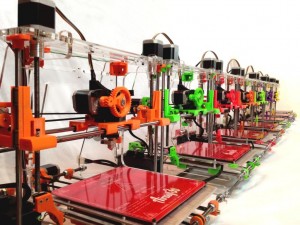3D Printing Principles:
General Principles Involved in Additive Manufacturing

3D Printing Principles: Now that you know about the history of 3D printing, you might ask what are the principles involved in 3d printing. "Additive manufacturing" is quite an intricate process. Nevertheless, anyone who wants to get a glance of what 3D printing is, and the processes involved, should take some time to get to know the principles involved in 3D printing.
3D Printing Principles - Modeling
The first stage involved in 3D printing is additive manufacturing, wherein computer-aided design (CAD) takes virtual blueprints or animation modeling software. They are then cut into digital cross-sections, which the machine will use as their guide for printing. The type of machine being used here will determine the material, or binding material, which will be deposited on the build bed or platform. This will be done until the material, or binder layering, is accomplished. The modeling stage ends once the final 3D model has been "printed."
3D Printing Principles - Printing
Here, the machine scans the design and adds layers upon layers of liquid, melted plastic, dry powder, or sheet material. This is done by building the model from a series of cross sections. They are then fused to reveal the final shape of the image. What’s great with this technique is that it has the ability to create almost any shape or geometric feature - from 'bottom to the top'.
The thickness and XY resolution is described by printer resolution dots per inch. This is also called, 'micrometer'. An average layer thickness would be around 100 micrometers or 0.1 mm. Other machines, on the other hand, like the Objet Connex series and 3D Systems' ProJet series has the capacity to print even the thinnest layers, around 16 micrometers.
Molding and other forms of traditional printing techniques are more affordable especially when manufacturing polymer products in large quantites. However, additive manufacturing is way faster, more flexible, and more affordable when printing in smaller quantities. 3D printers enable designers and concept developers, with the advantage of producing parts and concept models, with the help of a desktop-sized 3D printer.
3D Printing Principles - Finishing
While the printer-produced resolution is workable for various types of applications, printing an enlarged version of the item in standard resolution, and then eliminating the material with a higher-resolution subtractive process, is only possible when you opt for higher-resolution.
A number of additive manufacturing strategies have the capacity to use different materials when constructing parts. Other strategies also utilize supports when building. These can be removed or dissolved upon, once the print is completed and are used to support overhanging features during construction.
New! Comments
Have your say about what you just read! Leave me a comment in the box below.